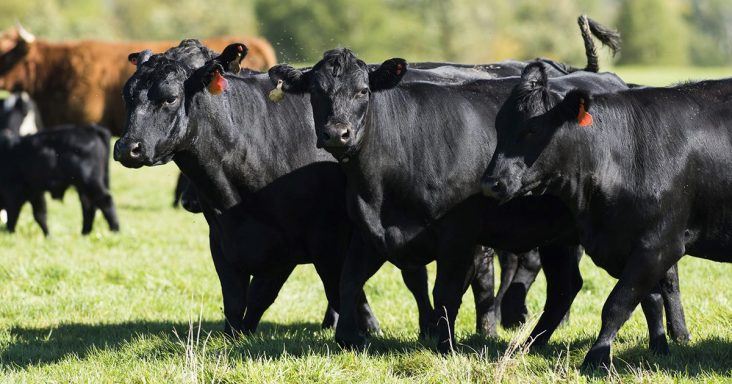Cattle markets face drought, high feed costs in 2021
by January 4, 2021 3:48 pm 1,182 views

The cattle industry, like the rest of the world, is ready to move beyond 2020, but there will be numerous factors shaping the industry in the first few months of 2021, according to Derrell Peel, livestock marketing analyst with Oklahoma State University.
He said markets face a mix of opportunities and challenges as 2021 gets underway. The continuing pandemic is expected to pressure the food service sector and create more challenges in food product markets in the first quarter of this year, Peel said.
“Boxed beef prices at the end of 2020 were just about exactly equal to one year earlier but that obscures the continuing variation in food service and retail grocery product demands” he said.
The biggest price dips are in food service dependent products like tenderloin which is down 14%. Petite tender prices fell 25% and brisket prices are down 4% from a year ago. On the flip side, strip loin steaks, which are popular in grocery stores rose 12% year-over-year. Overall beef demand has been and continues to be strong but the challenges to food supply chains will continue, Peel said.
The beef supply chain also faces challenges in 2021 as grain prices continue to rise. On average cash corn prices in December were up 22% from a year ago and sorghum prices are up 50% from the prior year. Wheat prices have risen 30% and soybean prices are up 35% from a year ago. Peel said the cost for feeder cattle has also risen by 39% from the same period last year.
“Higher feed prices mean higher feedlot ration costs and higher supplemental feed costs for stocker and cow-calf production. Cattle production will be affected by higher feed prices, not so much in terms of how much production will occur, but more in terms of how production will change. For example, higher ration costs will change feedlot demand for the type and size of feeder cattle preferred in feedlots,” he said.
Peel said drought continues to be a problem at the start of 2021 with 41% of the country experiencing some level of drought as of December, well above the 10% drought exposure in the prior year.
“The current level of drought is concerning and, should it persist into the coming growing season, may have significant impacts rather quickly in 2021. Drought generally expanded through 2020 to encompass most of the Rocky Mountain and western Plains regions,” Peel said.
He said cattle prices struggled through much of 2020 but ended the year with some momentum. Calf prices in Oklahoma were close to year earlier levels at the end of December and increased nearly 20% from lows earlier in the fall. Prices for heavier feeder cattle remained about 7% below year earlier levels at the end of the year but similarly increased roughly 13% from fall 2020 lows. Fed cattle prices finished the year with strength that represented a roughly 18% increase from summer lows but were more than 8% lower year over year.
“Strong beef demand and tightening cattle supplies provide cautious optimism for cattle markets in 2021. Higher feed prices and continuing drought conditions are threats to individual producers and perhaps to overall market conditions in the coming year,” Peel said. “Consumer demand will be supported by additional federal stimulus for a time but continuing macroeconomic challenges will persist through the year. The continuing pandemic and the time needed for vaccine implementation suggest that much of the promise of 2021 may be pushed into the second half of the year. In the meantime, uncertainty and volatility are likely to remain elevated and risk management continues to be a key management and marketing consideration.”
